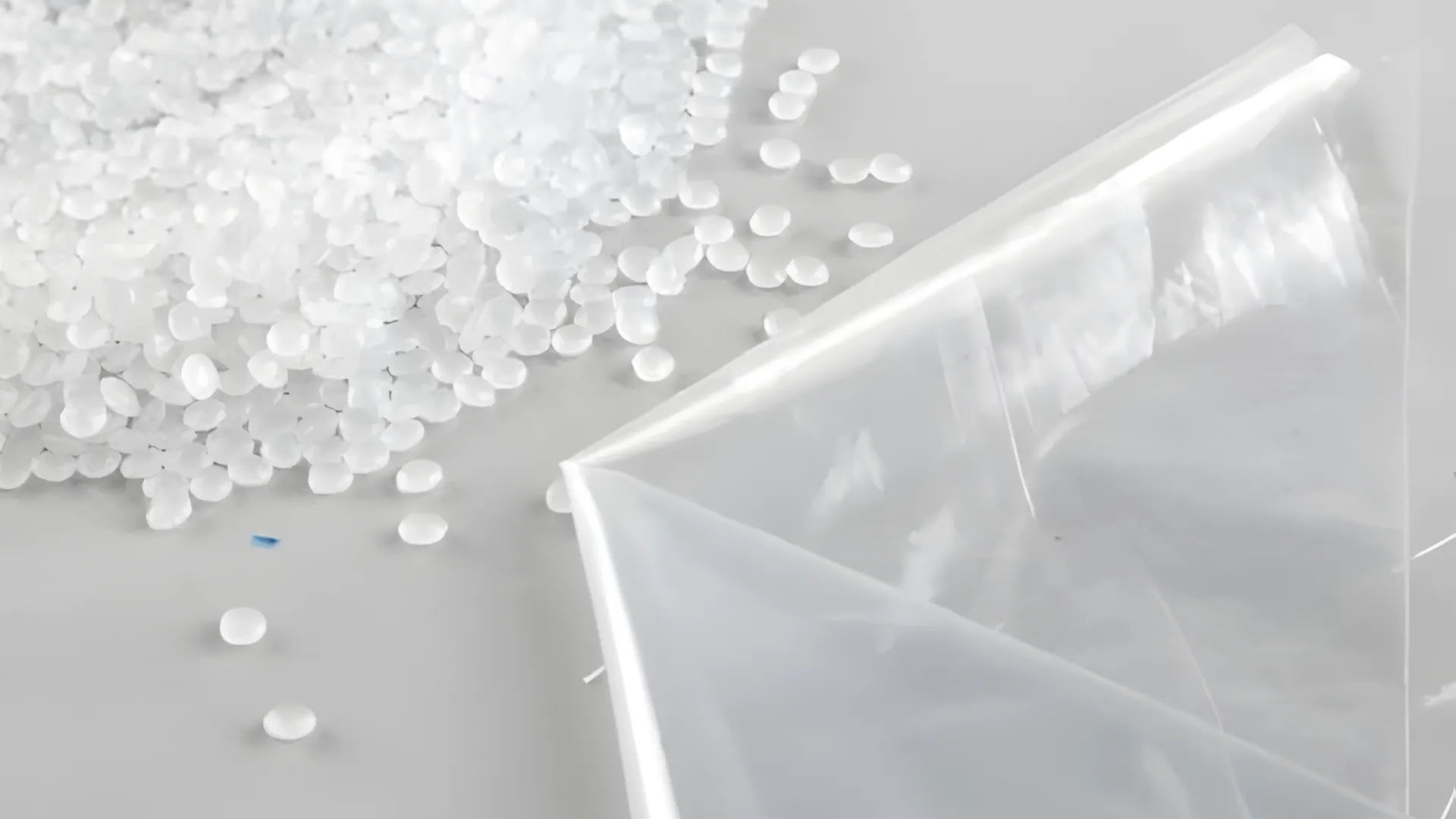Polyethylene (PE) and Polypropylene (PP) films are ubiquitous in packaging, agriculture, and various industrial applications. From stretch wrap and carrier bags to agricultural films and industrial liners, their lightweight, flexible, and durable nature makes them incredibly useful. However, these same properties present significant challenges when it comes to recycling. As the demand for sustainable practices and circular economy solutions intensifies, efficiently processing these film materials is paramount.
At Rumtoo, we understand the intricacies of plastic recycling. For businesses looking to turn PE/PP film waste into high-quality, reusable pellets, the choice of machinery is critical. This is where the Cutter-Compactor Plastic Pelletizing Machine truly shines. Let’s delve into why this technology is ideally suited for tackling the complexities of PE/PP film recycling.
Understanding the Unique Challenges of Recycling PE/PP Films
Before we explore the solution, it’s important to grasp why PE/PP films are notoriously difficult to recycle using conventional methods:
- Low Bulk Density: Films are light and voluminous, meaning they take up a lot of space for their weight. This makes it difficult to feed consistently into a standard extruder.
- Feeding Inconsistencies: Their tendency to tangle, bridge, or “fluff up” in hoppers leads to uneven material flow, disrupting the extrusion process and affecting output quality.
- Moisture Content: Films, especially post-consumer or agricultural ones, can retain moisture, which can cause voids and imperfections in the final pellets if not managed.
- Contamination: While pre-washing is crucial, some residual light contamination or printing inks can still be present.
- Heat Sensitivity: Films can degrade if exposed to excessive or uneven heat during the initial processing stages.
A standard pelletizing line without adequate pre-processing struggles to overcome these hurdles efficiently.
Enter the Cutter-Compactor: How Does It Work?
A Cutter-Compactor Pelletizing Machine (often called an agglomerating pelletizer or shredder-compactor pelletizer) integrates several crucial steps into a single, efficient unit, specifically designed to address the challenges posed by low-density materials like PE/PP films.
Here’s a simplified workflow:
- Alimentação: Film waste (loose, baled, or rolled) is typically fed into the cutter-compactor unit via a conveyor belt.
- Cutting & Shredding: Inside the compactor drum, rotating and stationary blades cut and shred the film into smaller, more manageable pieces.
- Friction & Densification (Agglomeration): The continuous high-speed cutting action generates frictional heat. This heat softens and partially melts the film scraps, causing them to shrink, densify, and agglomerate into irregular, crumb-like particles. This is a crucial step, as it dramatically increases the bulk density of the material.
- Pre-heating & Degassing: The frictional heat also pre-heats the material and helps to evaporate surface moisture, acting as a preliminary degassing stage.
- Direct Feeding to Extruder: The hot, densified material is then directly and continuously fed from the compactor into the connected extruder screw. Because the material is already hot and relatively homogenous, it melts more efficiently and consistently within the extruder.
- Extrusion, Filtration, Pelletizing: The extruder melts, homogenizes, and pushes the plastic through a screen changer (to filter out contaminants) and then through a die head. The molten strands are then cut into pellets (typically using a water-ring pelletizer or under-water pelletizer for PE/PP).
- Cooling & Drying: The freshly cut pellets are cooled and dried, ready for storage or re-use.
Key Advantages of Using a Cutter-Compactor for PE/PP Films
The integrated design of a cutter-compactor system offers numerous advantages over other recycling methods when processing PE/PP films:
- Enhanced Feeding & Throughput:
- The primary benefit is solving the low bulk density issue. By densifying the fluffy film into heavier agglomerates, the cutter-compactor ensures a consistent, forceful feed into the extruder. This prevents bridging and irregular flow, leading to significantly higher and more stable throughput.
- Improved Melt Quality & Homogenisation:
- The pre-heating and partial plasticizing in the compactor means the material enters the extruder in a much better state. This reduces the thermal and mechanical stress on the extruder screw, leading to a more homogenous melt with fewer unmolten particles and improved dispersion of any additives or masterbatch.
- Eficiência energética:
- Because the material is pre-heated by friction in the compactor, the extruder requires less energy to bring the plastic to its final melting temperature. This can result in noticeable energy savings compared to feeding cold, loose film (if that were even practically feasible at scale).
- Reduced Labour and Footprint:
- Combining cutting, densifying, and feeding into one unit eliminates the need for separate shredders, agglomerators, and complex conveying systems between them. This reduces the overall machinery footprint, capital investment, and labor required for operation and maintenance.
- Effective Moisture Removal:
- The heat generated during the compacting process helps to evaporate a significant amount of surface moisture from the films. This pre-drying step is vital for producing high-quality, void-free pellets. Some advanced designs also incorporate venting ports in the compactor or extruder for enhanced degassing.
- Versatility with Film Types and Conditions:
- Cutter-compactors can handle a range of PE/PP films, including LDPE, LLDPE, HDPE, and PP, whether they are printed, lightly soiled (post-washing), or have varying thicknesses. The aggressive cutting and compaction process is robust.
- Better Pellet Quality:
- The combination of consistent feeding, homogenous melt, and effective degassing results in pellets that are uniform in size and shape, with good density and fewer imperfections. This makes them more valuable for reintegration into manufacturing processes.
Cutter-Compactor Pelletizing Machine vs. Alternative Methods for Films
- Direct Feeding to Standard Extruder: Impractical for films due to low bulk density and feeding issues, resulting in very low output and poor quality.
- Separate Shredder + Force Feeder + Extruder: Better than direct feeding, but still doesn’t offer the densification and pre-heating benefits of a cutter-compactor, potentially leading to lower throughput and higher energy consumption in the extruder.
- Separate Shredder + Agglomerator + Pelletizer: This is a viable but more complex setup. It involves multiple standalone machines, requiring more floor space, more material handling between stages, potentially higher energy use, and more complex synchronization. The cutter-compactor integrates these steps more seamlessly.
| Feature | Cutter-Compactor Pelletizer | Shredder + Force Feeder + Extruder | Separate Shredder + Agglomerator + Pelletizer |
| Film Handling | Excellent | Moderate | Bom |
| Aumento da densidade aparente | Alto | Baixo | Alto (no Aglomerador) |
| Consistência da alimentação | Muito bom | Razoável para Bom | Bom (pós-Agglomerator) |
| Eficiência Energética | Bom a Muito Bom | Moderate | Razoável para Bom |
| Pegada | Compacto | Moderate | Grande |
| Etapas do processo | Integrado | Múltiplo | Múltiplos, díspares |
| Taxa de transferência típica | Alto | Moderado a Baixo | Moderado a Alto |
| Qualidade do pellet | Muito bom | Razoável para Bom | Bom |
Escolhendo o Cortador-Compactador Certo para Suas Necessidades com Rumtoo
Ao selecionar uma máquina de pelotização de plástico cortador-compactador para filmes PE/PP, considere fatores como:
- Requisitos de capacidade: Combine a produção da máquina (kg/h) com suas necessidades de processamento.
- Tipo e Condição do Filme: Considere a limpeza, o teor de umidade e os níveis de impressão de sua matéria-prima.
- Nível de automação: Procure recursos que simplifiquem as operações e reduzam a intervenção manual.
- Requisitos de desgaseificação: Para filmes muito impressos ou levemente úmidos, um sistema com desgaseificação aprimorada (por exemplo, desgaseificação a vácuo de duplo estágio na extrusora) é benéfico.
- Sistema de filtragem: Um sistema robusto de filtragem de fusão é crucial para remover contaminantes e garantir a pureza do pellet.
- Suporte e Expertise do Fabricante: Faça parceria com um fornecedor experiente como a Rumtoo, que pode fornecer suporte técnico, peças de reposição e consultoria de otimização de processos.
Conclusão: A escolha inteligente para reciclagem de filme PE/PP
Para empresas que levam a sério a reciclagem eficiente e lucrativa de filmes PE/PP, o Cutter-Compactor Plastic Pelletizing Machine oferece uma gama atraente de benefícios. Sua capacidade de superar os desafios inerentes aos materiais de filme de baixa densidade, cortando, densificando, pré-aquecendo e alimentando consistentemente a extrusora, leva a um maior rendimento, qualidade superior do pellet e maior eficiência operacional.
Na Rumtoo, nos especializamos em fornecer máquinas de pelotização de plástico robustas e confiáveis, adaptadas às suas necessidades específicas. Se você deseja atualizar seus recursos de reciclagem de filmes ou estabelecer uma nova linha de processamento, nossos sistemas de corte e compactador representam um investimento inteligente em direção a um futuro mais sustentável e lucrativo.
Pronto para transformar seus resíduos de filme PE/PP em recursos valiosos? Entre em contato com a equipe do Rumtoo hoje para uma consulta e descubra como nossas máquinas de pelotização de corte-compactador podem revolucionar suas operações de reciclagem!

